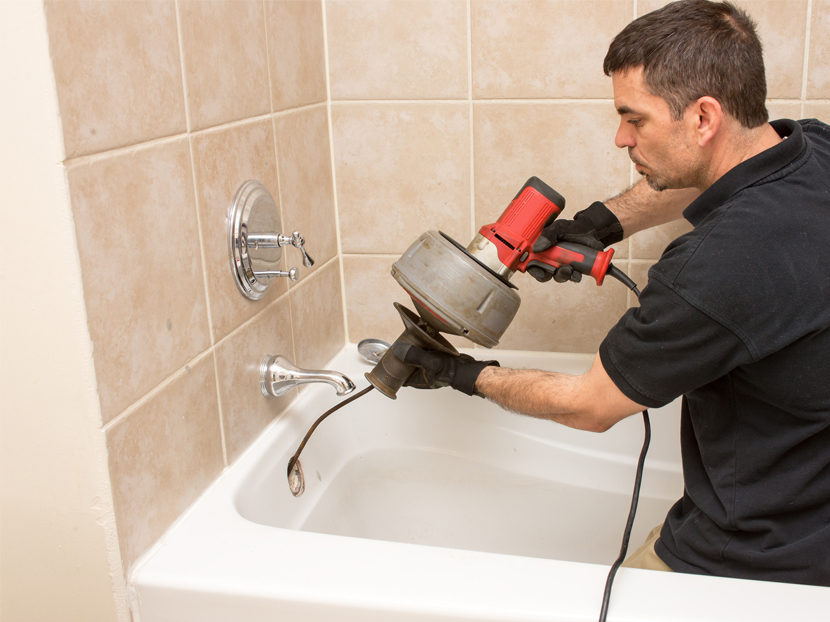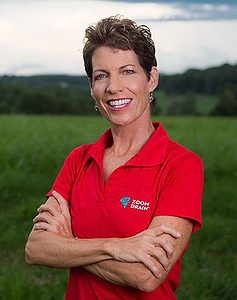Good Deal Vs. Bad Deal
What can we do to add value throughout the customer journey?

Our top-notch marketing team at ZOOM Drain consists of owner Jim Criniti, Marketing Manager Jared Epps and Marketing Coordinator Andrew Knechel. Between them, Jim and Jared have decades of front-line experience and have become master marketers. Andrew is new to our industry, though he has been marketing since 2010 at UPS Logistics and in the scholastic field.
The other day, Andrew and I were having a conversation about online marketing. “What causes people to click on an ad?” I ask. “People want a good deal,” Andrew replies. “Our job is to help them identify a good deal from a bad deal.”
Don’t you love it when someone says in a few words what you have spent years trying to articulate? This language — good deal/bad deal — facilitates a simple, transparent way for team members to communicate with each other and our customers. When value exceeds price, it’s a good deal. Otherwise, it’s a bad deal. What can we do to add value throughout the customer journey?
Online searches
“Online ads help customers find us when they have a drain or sewer problem,” Andrew continues. “I look at the words they are searching for. I study our competitors’ ads and messaging. When I search ‘clogged drain,’ I find a lot of deals — $49 any drain deals, $99 deals, 90 percent off deals. Ninety percent off of what? I saw a $7 drain cleaning deal. How is that possible? That can’t be a good deal. But how does our customer make sense of this?”
Andrew called to ask about the $7 deal. The person who answered said: “We have a dispatch fee of $160. If we can do the job easily [???], the price is only $7 on top of that. In other words, the price could be a low as $167.”
Is it a good deal or a bad deal? Well, if they're not going to be upfront about the pricing, what other bafflement lies ahead? There are so many awesome contractors in our industry with mad skills and expertise. Why is price the first thing mentioned? Many ads include words like honesty and trust and integrity. That messaging is at odds with bait-and-switch pricing.
“Low prices aren’t the only consideration when it comes to making a good deal,” Andrew adds, and points me to this review for ZOOM Drain Philadelphia (lightly edited for grammar and punctuation):
“IIIII I called Zoom because my kitchen drain and bathroom tub were getting clogged (draining very slowly). I had already called another local plumber, but they were very rude from the moment they picked up the phone. When I called Zoom, the rep who answered was very nice from the get-go. The technician who came (I think it was Tony), was not only wearing a mask and gloves, but also put on shoe covers before coming into the house!
“He was very attentive, clean and organized. Overall, very professional. He got the job done and an additional service, too, that I asked him about that was not part of my initial request (my toilet was leaking). He was also very fast getting it all done; everything was done in about an hour. Overall, I was very pleased with their service even though it was a little expensive. But you get what you pay for and in this case, it was worth it, if nothing else for the good customer service. I'm sure the plumber I called first would have done the job, too, but it would not have been as good an experience as this was.”
Andrew notes: “Reviews are a gold mine for marketing messaging. This customer cares about how we engage on the phone and how our tech treats her. Even though the service was ‘a little expensive,’ she considers it a good deal.
“Match up your words and your actions, starting with your ads. We comb through our Google My Business, Yelp, Angie's List and Home Advisor ads and all our marketing to have consistent, straightforward messaging and branding. For instance, we offer fast and friendly 24/7 service. Adhere to CDC guidelines for safety. Send a trained, experienced technician to get the job done right. Then, we aim to uphold those standards operationally.”
If we do this successfully, prospective customers may click our ad. The education continues.
On your website
No-brainer navigation is a good deal. Make it easy for customers to contact you any way that works for them. Customers may schedule work from the office and may prefer not to call. Same goes for parents with sleeping kids. On every page of your site, prominently display your phone number, live chat and, perhaps, a scheduling app.
Be sure to link your reviews to your site. Those five-star reviews are encouraging to prospective customers. They like it when others share their experiences (good deals!) via comments.
Rethink the lineup of coupons that is so prevalent in our industry. Andrew scratched his head at this practice. “If you are fairly priced, why would you offer a discount right off the bat?” he asks. “And why make your customer take an extra step for a good deal?”
Good point. “Mrs. Fernwicky, unless you mention the online coupon, I am going to give you the bad deal.”
With pictures, videos and succinct copy, lay out the ways you are going to do right by your customers and solve their problems.
If you do this well, they’ll contact you.
Live contact
It’s a good deal when the service coordinator (SC) answers the phone with a smile and a clear greeting. It gets even better when the customer feels heard, and the SC responds with a moment of empathy. It stinks, literally, to have to call a drain cleaner.
And it helps when the SC doesn’t have to unwind that weird pricing displayed in an online ad. Awkward!
“When the SCs collect the customer information, they also explain our service process,” Andrew explains. “They tell customers everything they should expect from this call — from the communication with our dispatcher to the arrival of our technician. The customer will get the tech’s picture and credentials, as well as a reminder when he or she is 30 minutes out. The truck is stocked with everything the tech needs. We become the best choice when we educate customers on what they should be looking for.”
I mentioned to Andrew that the customer might respond to all this by saying, “I saw an ad online for a $7 drain cleaning. Can you beat that?”
He says: “The SC might respond with, ‘That may not turn out to be a good deal. You may be better served by one of our service techs coming to take a look at the problem. He’ll give you options and reference our pricing menu so you can make a good decision. There’s no charge or obligation to have a tech come to your home. What time would work for you?’”
If the deal is good so far, the call gets booked. Next up: The tech.
On the job
Set your technicians up to win. This is where manuals and training and culture come in to play. Techs win when they can diagnosis the job, offer options and prices, communicate successfully with customers and fix problems. It creates outstanding deals for your customers, too.
Suppose the tech finds himself on a job where the customer shares a terrible experience: “Some guy came, took it all apart and left. Hasn’t been back.”
“That sounds like a bad deal,” your tech may reply. “I’m here now. We’ll make this better.”
Or he may be confronted with a coupon from another company. He can empathize and say: “Mrs. Fernwicky, you want a good deal, but that $49 drain offer may not be a good deal. A bad deal is when the price changes on you; a good deal is how we do business.” Then, list the ways that matter to the customer.
If all goes well, we make a friend, solve problems and make money. We may also get a five-star review with glowing comments, inspiring us and providing copy for our next Google Local Services ad. Sweet!
We don’t always get it right. However, I love so much that our marketing team is committed to demonstrating the best we can to help our customers (and team) get a great deal. Thanks, Andrew, Jared and Jim!





